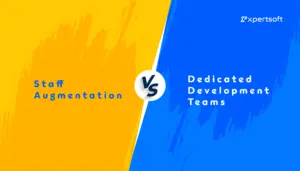The app development landscape has become more complex than ever, with a wide array of technologies available to developers. Whether you’re building a mobile application for a retail business, a web platform for financial services, or an AI-powered tool for healthcare, choosing the right technology stack is critical to your app’s success. This guide will take you through the essential technologies used in app development today, exploring how they integrate with each other and the benefits they bring in terms of performance, scalability, and cost-efficiency.
Front-End Technologies Used in App Development
The front-end of any application is the gateway to user experience. This part of the app is what users interact with directly—whether they’re browsing a website, scrolling through a mobile app, or engaging with a desktop application. The smoother and faster this interaction, the better the user retention and engagement.
1.1. HTML5, CSS3, and JavaScript: The Foundations
Front-end development begins with the basic building blocks of web development: HTML5, CSS3, and JavaScript. These languages lay the foundation for how content is structured, styled, and interacted with.
- HTML5 is responsible for the semantic structure of web pages. It enables modern web features like multimedia embedding and cross-platform compatibility, which are essential for today’s apps.
- CSS3 brings the aesthetics, allowing developers to create responsive designs that look beautiful across various devices.
- JavaScript breathes life into these pages, handling dynamic interactions and real-time updates without the need to reload the entire page.
But these technologies alone are often not enough for modern app development. Today’s users expect seamless, fast-loading applications, which is where frameworks like React, Angular, and Vue.js come into play.
1.2. Frameworks: Speed and Efficiency
Frameworks like React, Angular, and Vue.js enable developers to build interactive UIs faster by providing pre-built components and functionality. React, for instance, introduced the concept of a virtual DOM, which drastically improves performance by minimizing direct interactions with the real DOM. This allows for smoother updates and a more responsive user experience.
Angular, on the other hand, provides a complete solution for building single-page applications (SPAs), which load all resources at once and deliver a seamless experience as users navigate the app. SPAs and Progressive Web Applications (PWAs) have seen a sharp rise in adoption. According to Forrester (2023), PWAs can increase user engagement by up to 50% and reduce load times by 2-10x, making them a critical tool for businesses that prioritize speed.
Even a small delay in page load time can significantly impact user retention. A 100-millisecond delay in load time can lead to a 7% decrease in conversion rates (Google, 2023). This emphasizes the importance of using frameworks and tools that streamline front-end performance, keeping users engaged and conversions high.
2. Back-End Technologies Used in App Development
While the front-end is responsible for interaction, the back-end powers the functionality behind the scenes. It handles everything from database management to user authentication, and it ensures the app’s business logic works efficiently.
2.1. Choosing the Right Programming Language
When choosing a back-end language, developers often weigh the benefits of scalability, speed, and ease of use. Node.js, Java, and Python dominate this space, each offering distinct advantages:
- Node.js has gained popularity for its non-blocking, event-driven architecture, which excels in handling I/O-heavy operations like real-time chats and data streaming. In fact, Node.js can handle 40% more requests per second than Java, making it an excellent choice for applications that demand high concurrency.
- Java, with its enterprise-level robustness, remains a go-to choice for complex and large-scale applications. It’s favored by industries like finance and telecom for its performance and extensive libraries.
- Python is renowned for its simplicity, especially in the field of AI and machine learning integration. Its vast libraries, like TensorFlow and PyTorch, make Python the preferred language for developers looking to implement AI-driven functionalities.
2.2. Architectures and Scalability
Choosing the right back-end architecture is equally important for scaling applications efficiently. Traditional monolithic architectures are being replaced by microservices for their flexibility and scalability. Microservices allow an application to be broken down into smaller, independent services that can be developed, deployed, and scaled separately.
This architecture significantly improves the scalability of applications. According to O’Reilly (2023), microservices increase scalability by 50% compared to monolithic architectures. This architecture enables faster, more frequent deployment of new features, reducing the risk of downtime during updates.
3. Database Technologies used in App Development
Databases are at the heart of any app, storing and retrieving the data that powers the application’s functionality. Choosing between SQL and NoSQL databases can have a significant impact on the app’s performance, scalability, and flexibility.
3.1. Relational Databases (SQL)
SQL databases, such as MySQL and PostgreSQL, offer a structured approach to data storage. These databases are ideal for applications where data integrity and complex queries are essential. SQL databases follow ACID (Atomicity, Consistency, Isolation, Durability) principles, which ensure reliability, especially for transaction-heavy applications like banking or e-commerce.
3.2. NoSQL Databases: Scalability and Flexibility
However, as applications scale and data becomes more diverse, NoSQL databases like MongoDB and Cassandra are increasingly popular. These databases are designed for flexibility, allowing applications to handle large volumes of unstructured data. They’re particularly useful in industries like social media and IoT, where data is continuously generated and often lacks a strict structure.
In fact, NoSQL databases have seen a 40% increase in usage for applications requiring high scalability, while SQL databases remain dominant for complex queries (DB-Engines, 2023). This balance allows developers to choose the best database depending on the app’s needs—SQL for structured data and reliability, NoSQL for scalability and flexibility.
Redis, an in-memory NoSQL database, is another key player in applications requiring extremely fast response times. Under high loads, Redis provides a response time of under 1 millisecond, significantly outperforming traditional relational databases like MySQL, which can reach response times of 100ms or more (Redis Labs, 2023).
4. Cloud Platforms for Hosting and Scalability
With the rapid growth of cloud computing, most modern applications are hosted in the cloud, providing businesses with the flexibility to scale their apps based on demand while reducing operational costs.
4.1. Major Cloud Providers
Leading cloud platforms like Amazon Web Services (AWS), Microsoft Azure, and Google Cloud Platform (GCP)offer a wide range of services for hosting, storage, and computing. These platforms provide tools for serverless architecture, enabling developers to run code without worrying about managing servers.
Serverless computing—where you only pay for the resources consumed by your application—has become a cost-effective solution for many businesses. According to AWS (2023), serverless computing can reduce infrastructure costs by 70% compared to traditional virtual machines or containers. This is ideal for startups and SMEs that need to scale quickly without heavy upfront investments in infrastructure.
4.2. Cloud Adoption Trends
The widespread adoption of cloud platforms is not just about scalability but also about reducing complexity in managing infrastructure. By 2024, 90% of enterprises are expected to adopt cloud services, driven primarily by the promise of cost reductions of up to 30% compared to traditional on-premise infrastructure (Gartner, 2023). This shift underscores the need for businesses to integrate cloud solutions into their app development strategies for long-term sustainability.
5. Mobile Frameworks Technologies used in App Development
Mobile apps have become an essential part of any digital strategy, and choosing the right development framework can significantly impact both time-to-market and overall cost.
5.1. Native Development
Native app development—using languages like Swift for iOS and Kotlin for Android—offers superior performance and tighter integration with the device’s hardware. These apps can take full advantage of the device’s capabilities, such as camera, GPS, and sensors, making them ideal for high-performance applications like gaming or AR/VR experiences.
5.2. Cross-Platform Development: Cost and Time Savings
However, for businesses looking to reach both iOS and Android users without developing two separate codebases, cross-platform frameworks like React Native and Flutter are an attractive solution. Cross-platform development allows developers to write code once and deploy it across multiple platforms, reducing both development time and costs.
According to Statista (2023), using cross-platform frameworks like React Native can reduce development time by 30% and costs by 40% compared to native development. Moreover, React Native dominates the market with a 42% share, followed closely by Flutter at 39%, showing the growing preference for cross-platform solutions (Statista, 2023).
6. AI and Machine Learning Integration
Artificial Intelligence (AI) and Machine Learning (ML) are no longer optional technologies; they are now key differentiators for businesses seeking to create more personalized and intelligent applications.
6.1. AI-Driven Features
From recommendation engines and fraud detection systems to chatbots and predictive analytics, AI has found its place in almost every industry. Integrating AI can provide significant advantages, such as automating routine tasks, improving decision-making, and offering highly personalized user experiences.
Currently, AI is integrated into 30% of mobile and web applications, and this figure is expected to grow by 50% by 2025 (IDC, 2023). This rapid adoption is largely driven by the ability of AI to enhance user engagement and improve operational efficiency.
6.2. ROI of AI Investments
The financial impact of AI cannot be understated. According to McKinsey (2023), implementing AI for personalized customer experiences can increase revenue by up to 15% while reducing operational costs by 10%. These numbers highlight how AI can deliver a strong return on investment (ROI) by driving both customer satisfaction and operational efficiency.
7. DevOps and CI/CD Tools
For businesses that want to accelerate their development process without sacrificing quality, DevOps practices, including Continuous Integration (CI) and Continuous Deployment (CD), are essential. These tools enable teams to automate testing, integration, and deployment, ensuring that code is released faster and with fewer bugs.
7.1. Speed and Efficiency
Tools like Jenkins, Docker, and Kubernetes have become integral to DevOps pipelines, allowing developers to automate the build, test, and deployment processes. CI/CD pipelines can improve development cycle speed by 20-30%, increasing release frequency by 50% (DORA, 2023). This automation translates into more frequent updates and faster time-to-market for new features, helping companies stay competitive.
7.2. Cost Savings
Beyond speed, automating deployment processes offers significant cost savings. According to Puppet (2023), automating deployment with tools like Jenkins and Docker reduces operational costs by 30%, freeing up resources for other strategic investments
8. Cybersecurity in App Development
Security is paramount in today’s app development landscape, particularly in industries handling sensitive user data, such as healthcare, finance, and e-commerce.
8.1. Rising Cybersecurity Threats
The frequency of cyberattacks on web and mobile apps has surged in recent years. Cyberattacks targeting apps increased by 30% in 2023, and the average cost of a data breach is now a staggering $4.45 million (IBM, 2023). Given this growing threat, it’s crucial for businesses to adopt robust security measures early in the development process.
8.2. The ROI of Security Investments
Investing in cybersecurity during development can yield significant cost savings in the long run. According to the Ponemon Institute (2023), every $1 spent on cybersecurity during the development phase can save up to $4 in breach-related costs later on. This underlines the importance of proactive security measures, from encryption to multi-factor authentication, in mitigating potential risks.
9. Real-World Use Cases Connecting Multiple Technologies
Let’s consider how these technologies integrate in real-world applications:
9.1. E-commerce Platforms
E-commerce platforms like Amazon and Shopify rely on a combination of React for front-end development, Node.js and Python for back-end processes, and AWS for cloud hosting. These platforms also integrate AI-driven recommendation engines to personalize user experiences.
According to Salesforce (2023), integrating these technologies can improve customer retention by 25% and increase conversion rates by 15%, demonstrating the power of a well-chosen tech stack.
9.2. Financial Services
In the financial sector, companies like PayPal and Revolut use a combination of Kotlin for mobile development, microservices for scalability, and AI for fraud detection. These tools have helped reduce fraud rates by 50% (Accenture, 2023), while ensuring scalability and high performance under heavy transaction loads.
10. Best Practices for Choosing the Right Tech Stack
With so many technologies available, choosing the right stack depends on several factors, including your project’s scope, scalability needs, and budget constraints. Here are a few best practices:
- Align with Business Goals: Ensure that the technology stack supports your long-term business objectives. For example, if you expect rapid growth, choosing a cloud platform with strong scalability features is crucial.
- Consider Developer Expertise: Select technologies that your development team is comfortable with, or plan for training if new technologies are required.
- Cost Efficiency: Weigh the initial and long-term costs of the tech stack. For instance, cross-platform frameworks like React Native can save time and money, while cloud services like AWS reduce the need for expensive infrastructure.
- Scalability and Flexibility: Opt for a tech stack that can scale easily as your app grows. Microservices and cloud-based infrastructure are ideal for this.
Conclusion
The technology stack you choose for app development plays a crucial role in the success of your project. By carefully selecting front-end frameworks, back-end architectures, databases, and cloud services, you can build scalable, high-performance applications that meet both your business and user needs. Integrating AI, CI/CD pipelines, and strong cybersecurity measures further enhances your app’s capabilities, ensuring long-term success in today’s competitive market.
Need help selecting the right tech stack for your next project? Contact us today for expert guidance tailored to your business needs!



